Resources
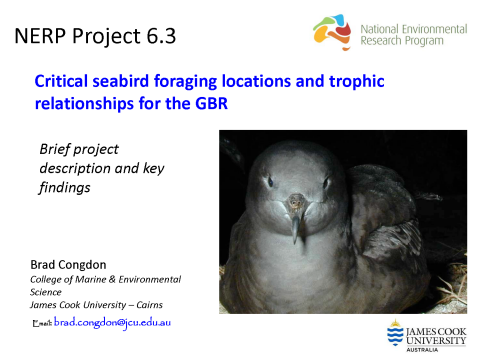 Brad Congdon (JCU); Critical seabird foraging locations and trophic relationships for the GBR; Thursday 6th November.
Brad Congdon (JCU); Critical seabird foraging locations and trophic relationships for the GBR; Thursday 6th November.
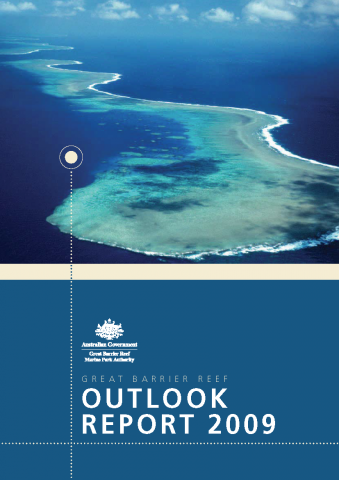 The Great Barrier Reef Outlook Report 2009 is a stock-take of the Great Barrier Reef, its management and its future.
The Great Barrier Reef Outlook Report 2009 is a stock-take of the Great Barrier Reef, its management and its future.
The aim of the Outlook Report is to provide information about:
- The condition of the ecosystem of the Great Barrier Reef Region (including the ecosystem outside the Region where it affects the Region);
• Social and economic factors influencing the Great Barrier Reef ecosystem;
• Management effectiveness of the Great Barrier Reef; and
• Risk-based assessment of the long-term outlook for the Region.
The Report underpins decision-making for the long term protection of the Great Barrier Reef. It was prepared by the GBRMPA based on the best available information and was independently peer reviewed. Many people contributed to the development of the Outlook Report including:
• Australian and Queensland Government agencies
• Leading Great Barrier Reef scientists and researchers
• Industry representatives
• Advisory committees
• Members of regional communities and the public.
The publication of an Outlook Report was a key recommendation of the review of the Great Barrier Reef Marine Park Act 1975. A report is to be prepared every five years and given to the Minister for Sustainability, Environment, Water, Population and Communities for tabling in both houses of the Australian Parliament.
The Great Barrier Reef Outlook Report 2009 is the first of these reports.
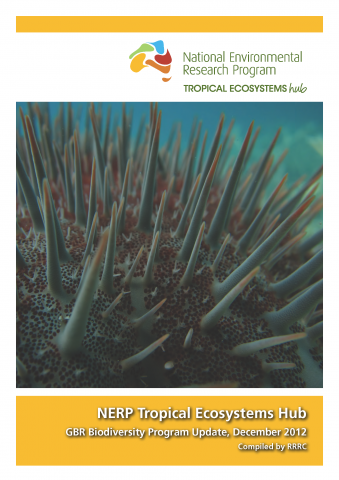 An update brochure of what's going on with the NERP Tropical Ecosystems Hub Great Barrier Reef Biodiversity projects.
An update brochure of what's going on with the NERP Tropical Ecosystems Hub Great Barrier Reef Biodiversity projects.
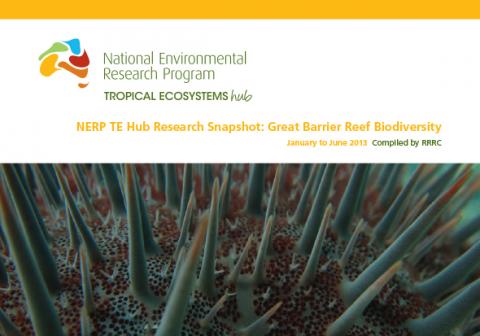 A snapshot of the research progress within the Great Barrier Reef Biodiversity node for January to June 2013.
A snapshot of the research progress within the Great Barrier Reef Biodiversity node for January to June 2013.
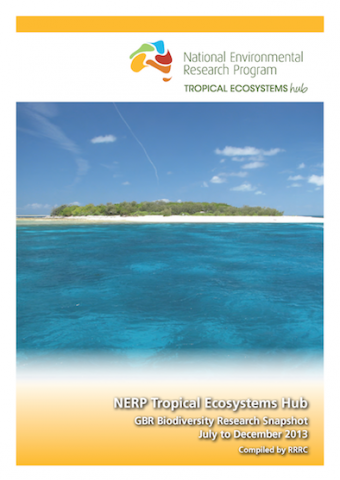 A snapshot of the research progress within the Great Barrier Reef Biodiversity node for July to December 2013.
A snapshot of the research progress within the Great Barrier Reef Biodiversity node for July to December 2013.

This project will help in the management of seabird populations of the Great Barrier Reef (GBR) and greater Coral Sea areas by providing information about the foraging locations, behaviour, and success of different species. Researchers have trialled and successfully used a range of tracking systems on foraging shearwaters in the southern GBR. From this work they have been able to describe shearwater foraging habitat at near-colony scales and identify the level of prey resources required for successful breeding. Studies in both the northern and southern GBR have provided preliminary data on links between seabird foraging success and specific ocean weather systems and currents. The project has also identified potential overlap between seabird foraging areas and blue-water billfish and tuna fishing activity outside the GBR.

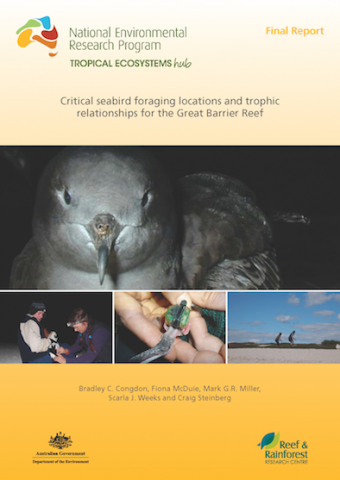 Congdon, B.C., McDuie, F., Miller, M.G.R., Weeks, S.J., Steinberg, C. (2014) Critical seabird foraging locations and trophic relationships for the Great Barrier Reef.
Congdon, B.C., McDuie, F., Miller, M.G.R., Weeks, S.J., Steinberg, C. (2014) Critical seabird foraging locations and trophic relationships for the Great Barrier Reef.© JCU

Marine Ecology Progress Series
McDuie, F., Goulding, W., Peck, D.R., Congdon, B.C. (2013) Divergence in chick developmental patterns among wedge-tailed shearwater populations. Marine Ecology Progress Series. 485, 275-285 [doi: 10.3354/meps10322].

Chambers, L.E., Devney, C.A., Congdon, B.C., Dunlop, N., Woehler, E.J., Dann, P. (2011) Observed and predicted effects of climate on Australian seabirds. Emu - Austral Ornithology. 111 (3), 235-251 [doi:10.1071/MU10033].



